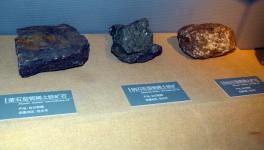Appeal to NHRC: ‘Ban J&J Products to Prevent Asbestos-related Diseases and Deaths’
Following the announcement of discontinuation of talcum powder products sale by the US-based Johnson and Johsnson in North America, activist Gopal Krishna of Toxics Watch Alliance has appealed to the National Human Rights Commission (NHRC) to intervene and ban the products immediately in India as well.
Even as the World Health Organisation (WHO) has confirmed that all types of asbestos cause lung cancer, mesothelioma, cancer of the larynx and ovary, and asbestosis (fibrosis of the lungs), several reports have confirmed the presence of carcinogenic silicate mineral in the powder widely used for babies. The activist wrote, “We submit that the World Health Organisation (WHO)’s International Agency for Cancer Research (IARC) has recognised the presence of asbestos in talcum powder. IARC Monograph on the Evaluation of Carcinogenic Risks to Humans on Carbon Black, Titanium Dioxide, and Talc (2010) refers to the presence of asbestos in talcum powder. It also refers to "Use of talc for feminine hygiene".”
In this context, he urged the NHRC to consider recommending to the central government and state governments “to prevent preventable diseases and deaths by banning these products with immediate effect”, instead of waiting for the company to withdraw its products.
Citing the statement by Johnson and Johnson announcing its discontinuation in the US, Krishna said, “This announcement is aimed at safeguarding the health and human rights of residents and citizens of North America but not the residents and citizens of India. Such doublespeak and double standard in matters of public health in general and children’s health in particular merits the urgent intervention of the Commission.”
An investigation by Reuters in 2018 had reported that the manufacturer had been aware of the presence of the carcinogenic in its products. It had then reported: “The earliest mentions of tainted J&J talc that Reuters found come from 1957 and 1958 reports by a consulting lab. They describe contaminants in talc from J&J’s Italian supplier as fibrous and “acicular,” or needle-like, tremolite. That’s one of the six minerals that in their naturally occurring fibrous form are classified as asbestos. At various times from then into the early 2000s, reports by scientists at J&J, outside labs and J&J’s supplier yielded similar findings. The reports identify contaminants in talc and finished powder products as asbestos or describe them in terms typically applied to asbestos, such as “fiberform” and “rods.””
Citing the history of the patients who suffered ailments connected to the use of J&J products and their lawsuits, mainly in the US, Krishna wrote: “We submit that the Commission. must recommend the enviro-occupational health audit of the workers who handle asbestos laden talcum powder in the manufacturing facilities of talcum powder products in general besides the health audit of the communities who are in the vicinity of such factories and recommend adequate compensation for those who are exposed to the carcinogenic mineral fibers and are suffering from asbestos-related diseases. This will be also relevant for assessing the harm which the unsuspecting consumers continue to face. These consumers include all judges, legislators, officials, their children and grandchildren and the residents of India.”
Read the full text of the letter below:
To
Chairman
National Human Rights Commission
Date: May 26, 2020
Subject- Doublespeak and Double Standards of Johnson & Johnson cause
of ongoing exposure of Indians to hazardous asbestos mineral fibers
contaminated Talcum Powder
Sir,
This is to draw your immediate attention towards the announcement
dated May 19, 2020 by Johnson & Johnson, a multinational company
headquartered in New Brunswick, New Jersey, USA stating that it will
discontinue sale of its Talcum Powder products in North America. This
announcement is aimed at safeguarding the health and human rights of
residents and citizens of North America but not the residents and
citizens of India. Such doublespeak and double standard in matters of
public health in general and children’s health in particular merits
the urgent intervention of the Commission. (Reference: Statement of
Johnson & Johnson, May 19, 2020,
We wish to point out that “the Company will wind down the
commercialization of talc-based Johnson’s Baby Powder in the U.S. and
Canada in the coming months. Existing inventory will continue to be
sold through retailers until it runs out.” The news report titled
Johnson & Johnson to End Talc-Based Baby Powder Sales in North America
published in The New York Times merits attention as well. (Reference:
Tiffany Hsu and Roni Caryn Rabin, May 19, 2020,
https://www.nytimes.com/2020/05/19/business/johnson-baby-powder-sales-stopped.html).
We submit that Word Health Organisation (WHO)’s International Agency
for Cancer Research (IARC) has recognized presence of asbestos in
talcum powder. IARC Monograph on the Evaluation of Carcinogenic Risks
to Humans on Carbon Black, Titanium Dioxide, and Talc (2010) refers to
the presence of asbestos in talcum powder. It also refers to "Use of
talc for feminine hygiene". The use of body powder for feminine
hygiene can be estimated from the prevalence reported for controls in
case–control studies that investigated the association between the use
of cosmetic talc for feminine hygiene and the risk for ovarian cancer.
It refers to exposure to respirable dust during the use of talcum
powders on the face, body and babies. Talc is used as a surface
lubricant on the majority of condoms manufactured; contact with
condoms may also represent a direct means of exposure of the female
genital tract to talc. Exposure to talc can also occur during surgical
procedures when using powdered gloves. Talc particles were observed in
the navels of small children, in the testes, on the vocal cords, in
the urinary bladder tract and after removal of varicous veins. Besides
this the Food Chemical Codex (2003) provides specifications for
food-grade talc, including the statement that “talc derived from
deposits that are known to contain associated asbestos is not food
grade.” Under the voluntary guidelines initiated in 1976, the
Cosmetic, Toiletry, and Fragrances Association stated that all
cosmetic talc should contain at least 90% platy talc (hydrated
magnesium silicate) that is free from detectable amounts of fibrous,
asbestos minerals. Meanwhile, some 67 countries have banned all kinds
of asbestos. World Health Organisation (WHO)’s recommendations have
established the infectious nature of Covid-19, the same WHO has
underlined that “All types of asbestos cause lung cancer,
mesothelioma, cancer of the larynx and ovary, and asbestosis (fibrosis
of the lungs).” (Reference:
https://www.who.int/ipcs/assessment/public_health/asbestos/en/ and
https://www.who.int/news-room/fact-sheets/detail/asbestos-elimination-of-asbestos-related-diseases)
We submit that the Commission. must recommend the enviro-occupational
health audit of the workers who handle asbestos laden talcum powder in
the manufacturing facilities of talcum powder products in general
besides the health audit of the communities who are in the vicinity of
such factories and recommend adequate compensation for those who are
exposed to the carcinogenic mineral fibers and are suffering from
asbestos related diseases. This will be also relevant for assessing
the harm which the unsuspecting consumers continue to face. These
consumers include all judges, legislators, officials, their children
and grandchildren and the residents of India.
Earlier, an investigative report titled “Johnson & Johnson knew for
decades that asbestos lurked in its Baby Powder” was published on
December, 14, 2018 which too is relevant for protecting the human
rights of Indians. The investigation was conducted by Reuters, a 167
year old international news agency headquartered in London. This
investigative report is consistent with the findings of a study by
India’s Industrial Toxicology Research Centre (IITR), Lucknow, a
constituent laboratory of Council of Scientific & Industrial Research
(CSIR), Ministry of Science and Technology, Government of India on
“Exposure risk to contaminants in pharmaceutical and cosmetic powders”
has found that “There are different types of cosmetic powders such as
body powder, baby powder, face powder, eye shadow and powdered blush
as well as pharmaceutical powders available in the market. Both the
sexes of all age groups are using these powders. These are talc -
based. Talc is a mineral product and often contaminated with asbestos
fibres.”
The aim of the IITR study “was to investigate the safety of such
powders being sold in the market, initially by analyzing the asbestos
content. Five branded samples of talcum powder were analysed and all
were found contaminated with asbestos fibres. Asbestos fibre
contamination in these powders ranged from 10.3 – 15.4%. Fibre length
study on two samples revealed that asbestos fibres were 22.8 – 34.7%,
48.2 – 55.1% and 17.1 – 22.1% in the range of <10µm, 10 – 20µm, and >
20µm, respectively. The study indicates risk of human exposure to
asbestos through the use of naturally contaminated talcum powder. It
is noteworthy that asbestos takes many years to cause asbestosis and
carcinogenic malignancies which are irreversible. It also necessitates
a regular monitoring and surveillance on all the cosmetic and
pharmaceutical powders being marketed for asbestos contamination.”
This has been published in the Annual Report Annual Report 2005-2006
of IITR. IITR is accredited by National Accreditation Board for
Testing and Calibration Laboratories (NABL) for chemical and
biological testing and is recognized for GLP (Good Laboratory
Practice) toxicity testing. (Reference:
http://www.itrcindia.org/ITRC_Annual_Report_2005-06.pdf )
The investigation by Reuters corroborates the findings of IITR. This
recent investigation was undertaken in the wake of three verdicts in
New Jersey, California and St. Louis awarding compensation to
plaintiffs who blamed asbestos-tainted Johnson & Johnson talc products
for their mesothelioma, a type of cancer that develops from the thin
layer of tissue that covers many of the internal organs. The
connection between asbestos exposure and mesothelioma was discovered
in the 1970s. The third verdict was a watershed in in St. Louis: The
22 plaintiffs were the first to succeed with a claim that
asbestos-tainted Baby Powder and Shower to Shower talc, a longtime
brand the company sold in 2012 that caused ovarian cancer, which is
much more common than mesothelioma. The jury awarded them $4.69
billion in damages. Most of the talc cases have been brought by women
with ovarian cancer who say they regularly used Johnson and Johnson
talc products as a perineal antiperspirant and deodorant. The
inclusion of ovarian cancer besides mesothelioma has broadened the
potential liability of Johnson & Johnson, a 132 year old multinational
medical devices, pharmaceutical and consumer packaged goods
manufacturing company headquartered in New Brunswick, New Jersey, USA.
Earlier, British Medical Journal (BMJ) published an article titled
“Jury awards $4.7bn damages against Johnson & Johnson in talcum cancer
case” published in the renowned British Medical Journal (BMJ). As per
BMJ’s article, “More than 9000 former US talcum customers have lodged
suits against the company. Most claim damages for ovarian cancer, but
some allege that using the product led them to develop mesothelioma.
The award is by far the biggest yet against Johnson and Johnson in
litigation relating to talcum powder and the first case in which
plaintiffs alleged that asbestos in talcum powder caused their
disease. The verdict was handed down in the Circuit Court of the City
of St. Louis. ((Reference: BMJ 2018; 362 doi:
https://doi.org/10.1136/bmj.k3135)
We reiterate that this investigative report is of deep relevance for
the public health of present and future generation of Indians given
the fact that Johnson & Johnson company has admittedly been in India
for last 70 years. The company has brought many products in consumer
healthcare, medical devices and pharmaceuticals. In 1947, Johnson &
Johnson expanded into India, marketing Johnson’s Baby Powder. In
September 1957, Johnson & Johnson incorporated as a legal entity in
India. The production in its first manufacturing facility began in
1959 at the Johnson & Johnson India plant in Mulund, Mumbai, for
Johnson’s Baby Powder and other specialized products. In 1968, the
company introduces the Stayfree brand to India. A situation emerged
wherein Johnson & Johnson reached almost every household in India.
The Reuters investigative report refers to the findings of Dr. Irving
J. Selikoff who had conclusively established a link between the
inhalation of asbestos particles and lung-related ailments in the
1960s itself that paved the way for ban on asbestos of all kinds in
some 60 countries. Dr. Selikoff was the director of the Environmental
and Occupational Health Division of Mount Sinai Hospital in New York.
It is significant that Ms Lisa Girion of Reuters has shared the
official documents on the basis of which she has made these startling
claims in her investigative report.
(Reference: https://www.reuters.com/investigates/special-report/johnsonandjohnson-cancer/)
We wish to reiterate that in a Terms of Reference dated October 25,
2010 issued by Union Environment & Forests Ministry for a proposed
Asbestos cement sheet and accessories manufacturing unit of 1,80,000
Tonnes Per Annum capacity at Narsimharaopalem Village, Veerulupadu
Tehsil, Krishna District, Andhra Pradesh by M/s Sahyadri Industries
Limited made reference to "talc and chrysotile”.
Prior to the Reuters report, a 2014 paper published in the
International Journal of Occupational and Environmental Health titled
"Asbestos in commercial cosmetic talcum powder as a cause of
mesothelioma in women" by Ronald E Gordon et al concluded "we found
that a specific brand of talcum powder contained identifiable asbestos
fibers with the potential to be released into the air and inhaled
during normal personal talcum powder application. We also found that
asbestos fibers consistent with those found in the same cosmetic talc
product were present in the lungs and lymph node tissues of a woman
who used this brand of talc powder and developed and died from
mesothelioma. This study was published in October 2014. (Reference:
https://www.ncbi.nlm.nih.gov/pmc/articles/PMC4164883/)
We submit that the investigation by Reuters reveals that “Johnson &
Johnson developed a strategy in the 1970s to deal with a growing
volume of research showing that talc miners had elevated rates of lung
disease and cancer: Promote the positive, challenge the negative. That
approach was summed up by a J&J applied research director in a
“strictly confidential” March 3, 1975, memo to managers of the baby
products division, which used the talc in J&J’s signature Baby Powder.
Its approach reads: “Our current posture with respect to the
sponsorship of talc safety studies has been to initiate studies only
as dictated by confrontation,” the memo said. “This philosophy, so
far, has allowed us to neutralize or hold in check data already
generated by investigators who question the safety of talc.” It
reveals that scientific ghostwriters have been hired for long to hide
evidence of “cancer concern associated with exposure to talc.” Based
on an Italian study, one such ghost authored article that appeared in
the Journal of Occupational and Environmental Medicine, in 1976 found
no mesothelioma, the signature cancer of asbestos exposure. The
Italian study in question has been updated three times – in 1979, 2003
and 2017 – “confirming the lack of association between exposure to
asbestos-free talc, lung cancer and mesothelioma.” The investigative
underlines that Johnson & Johnson got a lot of mileage out of the
study. It was cited in a review article titled “The Biology of Talc,”
published Nov. 1, 1976, in the British Journal of Industrial Medicine.
(Reference: https://pdfs.semanticscholar.org/77df/7030e57e91ee73c8e313d6b54e0ea0b7c498.pdf)
In addition to dozens of published studies, the review cited
unpublished research, including one experiment that used a doll as a
proxy for infants and that supported the company’s position on the
safety of talc. It didn’t disclose that Johnson & Johnson had
commissioned the unpublished research. The author of the review
article concluded that the “concern that has been expressed about the
possible health hazard from consumer exposure to cosmetic talc is
unwarranted … There is no evidence that its normal use poses a hazard
to health.” The author was Hildick-Smith, the Johnson & Johnson
physician executive who had overseen the Italian study and played a
key role in the company’s talc safety research. The article did not
disclose his Johnson & Johnson connection, identifying him only as a
Rutgers University Clinical Assistant Professor of Pediatrics.
In a related event, I was a panelist at a Round Table Conference on
Issues Related to Asbestos Use in India held at India International
Centre, New Delhi on December 21, 2009, wherein Dr Iqbal Ahmad, a
scientist from IITR, Lucknow said that there are many different
sources of asbestos exposures which need to be looked at. He
identified talc (powder) as a major source which has asbestos
contamination and exposes a large section of population, especially
children and women. Talc is used in several industries as raw
material. He said that we do have numbers of talc based cosmetic
powders in India. China is the largest producer of talc. Some 47
companies which used to procure Chinese talc powder had to withdraw
their product from market in South Korea due to high asbestos
contamination.
We submit that Commission’s intervention will be germane in the light
of the judgment of Hon’ble Supreme Court in Consumer Education and
Research Centre (CERC) Vs Union of India (1995 AIR 922, 1995 SCC (3)
Get the latest reports & analysis with people's perspective on Protests, movements & deep analytical videos, discussions of the current affairs in your Telegram app. Subscribe to NewsClick's Telegram channel & get Real-Time updates on stories, as they get published on our website.
























